 One of my favorite things about covering wine is the opportunity to hang out with winemakers. It’s a lot of fun and also a relief when there’s someone in the room who’s more of a geek about fermented grape juice than I am. The last few years I’ve been really impressed with the offerings being put out by Trione Vineyards & Winery. And while I’ve loved the wines, it was only recently that I visited their tasting room and met their winemaker Scot Covington. I spent most of an afternoon with him and we tasted wines in barrel, tank and of course out of bottle. Trione has vineyards in Alexander Valley and the Russian River; hundreds of acres in fact. Most of the grapes are sold; Scot gets to make wine with the best of the best that their property offers. It’s clear that he loves what he does and the opportunity to select fruit from such a large playground is an inspiration to him. I tasted lots of wine with Scot and I eagerly anticipate re-tasting some of the offerings that aren’t even in bottle yes once they’re released, there’s a ton of promise and upside there. For the moment though here’s a look at three current Trione Wines you can get your hands on.
Trione 2009 Russian River Valley Syrah – The fruit for this wine came from a single block in Russian River Valley that’s planted to clone 470 and 877. The methodology Scot used to make this Syrah is similar to the one he employs with Pinot Noir. 809 cases were produced and it has a suggested retail price of $32. Black and red plum aromas fill the heady nose of this Syrah. Dried black fruit flavors are in strong evidence throughout the palate; blackberry and blueberry characteristics are joined by plum pudding spices. Bits of espresso and smoked meat emerge on the lengthy finish. Firm gripping tannins yield with some air. This Syrah is two-faced in nature, the fruit says new world, the style and methodology say old world. Bottom line, it makes for a delicious and food friendly wine.
One of my favorite things about covering wine is the opportunity to hang out with winemakers. It’s a lot of fun and also a relief when there’s someone in the room who’s more of a geek about fermented grape juice than I am. The last few years I’ve been really impressed with the offerings being put out by Trione Vineyards & Winery. And while I’ve loved the wines, it was only recently that I visited their tasting room and met their winemaker Scot Covington. I spent most of an afternoon with him and we tasted wines in barrel, tank and of course out of bottle. Trione has vineyards in Alexander Valley and the Russian River; hundreds of acres in fact. Most of the grapes are sold; Scot gets to make wine with the best of the best that their property offers. It’s clear that he loves what he does and the opportunity to select fruit from such a large playground is an inspiration to him. I tasted lots of wine with Scot and I eagerly anticipate re-tasting some of the offerings that aren’t even in bottle yes once they’re released, there’s a ton of promise and upside there. For the moment though here’s a look at three current Trione Wines you can get your hands on.
Trione 2009 Russian River Valley Syrah – The fruit for this wine came from a single block in Russian River Valley that’s planted to clone 470 and 877. The methodology Scot used to make this Syrah is similar to the one he employs with Pinot Noir. 809 cases were produced and it has a suggested retail price of $32. Black and red plum aromas fill the heady nose of this Syrah. Dried black fruit flavors are in strong evidence throughout the palate; blackberry and blueberry characteristics are joined by plum pudding spices. Bits of espresso and smoked meat emerge on the lengthy finish. Firm gripping tannins yield with some air. This Syrah is two-faced in nature, the fruit says new world, the style and methodology say old world. Bottom line, it makes for a delicious and food friendly wine.
Trione 2009 Alexander Valley Red Wine - This wine is a blend of all 5 classic Bordeaux grapes. The majority is Cabernet Sauvignon (69%), with Merlot (12%), Petit Verdot 7%), Cabernet Franc (6%), and Malbec (6%) making contributions too. The wine was aged in French oak for 18 months; 45% of the barrels utilized were new. 2,292 6 bottle cases were produced and it has a suggested retail price of $48. Sweet, dark berry fruit aromas fill the nose of this Red blend. Plum and blueberry flavors dominate the palate which brings to mind a bowl of fresh berry fruits. Black fruit flavors lead the charge, but bits of red slip in and out making their presence known. Tobacco, leather and chocolate notes are all in evidence on the finish which has solid length. Tannins are firm and gripping, they yield with some air. Along those lines, if you’re going to drink this now, decant it for an hour or so, otherwise lay it down for 5 or 6 years and enjoy it in the 5 or so years after that.
Trione 2009 Alexander Valley Cabernet Sauvignon “Block 21” – The single block this Cabernet was sourced from is planted to clone 337. In addition to Cabernet Sauvignon (85%), bits of merlot (9%), Cabernet Franc (2%), Malbec (2%), and Petit Verdot (2%) were also blended in. Each lot was barrel aged separately for 12 months and then blended, an additional 12 months in barrel followed blending. French oak barrels were uses, 45% of them were new. 981 6 packs were bottled and this wine has a suggested retail price of $64. A potpourri of spice leads the nose of this Cabernet. They’re joined by violets and blueberry aromas. Plum, black raspberry and blackberry flavors are present on the full-bodied but easy-going palate. The finish shows off chocolate covered blueberry and a wisp of chicory. This is an exceptionally smooth and engaging Cabernet Sauvignon that’s as easy to drink all by itself as it is to pair with a wide array of food. Alexander Valley is one of the best areas in California for growing excellent Cabernet Sauvignon. This offering from Trione proves how good Cabernet from Alexander Valley can be. It’s wonderful now, but don’t hesitate to lay it down for 8-12 years.
Trione Vineyards & Winery is releasing some terrific wines that speak to their origins in two distinct Sonoma County Appellations. Winemaker Scot Covington is pushing the envelope one vintage after another. He does this not only by enhancing the portfolio with occasional new releases but more importantly by constantly tinkering and striving to make the best wines he can with the bounty that Trione’s Vineyards offer. If you’re in Alexander Valley, stop off at their tasting room and sample the wonderful Sonoma County Wines they’re offering. And if you’re not going to be in Sonoma County soon, go to your favorite local wine shop and look for some Trione wines; I guarantee a delicious experience.

 A few months back I had dinner with the chief winemaker for the entire
A few months back I had dinner with the chief winemaker for the entire  A few weeks back I was at the Australia Today Trade Show in New York City. While there, I had the opportunity to sample a wide array of wines coming out of Australia. Most of them were current releases, in a few cases there were some older vintages being showcased during a sit down seminar. Most obvious when tasting a wide swath of Aussie releases is the diversity and breadth of the offerings. This is true both in terms of grape varietals and style of finished wines. If overripe Shiraz is your only image of Australian wine, you’re in for a stunning and pleasant surprise. There are wines of all shapes and sizes being made in Australia. Here’s a look at a couple of selections from the event that really stood out.
Running With Bulls 2012 Tempranillo - This wine from the Barossa Valley and it sells for around $17. Aromas of violets and plum leap from the effusive nose of this wine. Cherry characteristics lead a grab bag of warming red fruits and spices on the plate of the Running With Bulls Tempranillo. The finish is above average in length and persistent. Red fruits continue along with bits of earth and leather. This is a well balanced wine that will excel with hard cheeses and pretty much anything that comes off of your grill. It’s a solid example of Tempranillo that shows how adaptable this varietal can be to a region like the Barossa Valley which is so different from its more native Rioja.
A few weeks back I was at the Australia Today Trade Show in New York City. While there, I had the opportunity to sample a wide array of wines coming out of Australia. Most of them were current releases, in a few cases there were some older vintages being showcased during a sit down seminar. Most obvious when tasting a wide swath of Aussie releases is the diversity and breadth of the offerings. This is true both in terms of grape varietals and style of finished wines. If overripe Shiraz is your only image of Australian wine, you’re in for a stunning and pleasant surprise. There are wines of all shapes and sizes being made in Australia. Here’s a look at a couple of selections from the event that really stood out.
Running With Bulls 2012 Tempranillo - This wine from the Barossa Valley and it sells for around $17. Aromas of violets and plum leap from the effusive nose of this wine. Cherry characteristics lead a grab bag of warming red fruits and spices on the plate of the Running With Bulls Tempranillo. The finish is above average in length and persistent. Red fruits continue along with bits of earth and leather. This is a well balanced wine that will excel with hard cheeses and pretty much anything that comes off of your grill. It’s a solid example of Tempranillo that shows how adaptable this varietal can be to a region like the Barossa Valley which is so different from its more native Rioja. When it comes to wines in the value category I’m looking for things that have wide appeal, easy drinkability and solid varietal character. In general I’m thinking about wines that will go over well in large gatherings, and have curb appeal. Often times I feel that blends are particularly good for these settings. Here’s an offering I just tried from Australia that hits the mark for me.
Bailey’s of Glenrowan 2012 19 Crimes Red Wine Blend was produced from fruit sourced in South Eastern Australia. This wine is a blend of Shiraz (mostly) with some Durif (Petite Sirah) added in. After fermentation this offering was aged in French oak barrels for just about 6 months. This wine most often sells for $10. Red cherry aromas dominate the generous and ebullient nose of this 2012 blend. The palate is simply stuffed with a mélange of ripe, berry-pie filling notes. Red and black raspberry, cherry and blackberry are all present and accounted for. Bits of cinnamon and black pepper spice provide a nice accompaniment to all the glorious fruit flavors. The finish, which has nice length, features cranberry, hints of sweet chocolate, and a touch of a mineral component. 19 Crimes is very tasty all by itself. That said, it will also serve as a good accompaniment to a host of casual hand foods such as burgers, pizza, ribs and the like.
When it comes to wines in the value category I’m looking for things that have wide appeal, easy drinkability and solid varietal character. In general I’m thinking about wines that will go over well in large gatherings, and have curb appeal. Often times I feel that blends are particularly good for these settings. Here’s an offering I just tried from Australia that hits the mark for me.
Bailey’s of Glenrowan 2012 19 Crimes Red Wine Blend was produced from fruit sourced in South Eastern Australia. This wine is a blend of Shiraz (mostly) with some Durif (Petite Sirah) added in. After fermentation this offering was aged in French oak barrels for just about 6 months. This wine most often sells for $10. Red cherry aromas dominate the generous and ebullient nose of this 2012 blend. The palate is simply stuffed with a mélange of ripe, berry-pie filling notes. Red and black raspberry, cherry and blackberry are all present and accounted for. Bits of cinnamon and black pepper spice provide a nice accompaniment to all the glorious fruit flavors. The finish, which has nice length, features cranberry, hints of sweet chocolate, and a touch of a mineral component. 19 Crimes is very tasty all by itself. That said, it will also serve as a good accompaniment to a host of casual hand foods such as burgers, pizza, ribs and the like. I’m a firm believer that most of us should be drinking sparkling wine more often. It can be versatile with food, often delicious on its own and quite frankly just plain fun. That said the one day we all seem to agree on when it comes to Sparkling Wine consumption is New Years Eve. With that in mind here are three that I tried recently and really enjoyed. One of them falls into the traditional category of classic Champagne. The other two are new world entries, one traditional in style and intent, and the other leaps and bounds in a different direction. Most importantly each of them is unique and delicious.
I’m a firm believer that most of us should be drinking sparkling wine more often. It can be versatile with food, often delicious on its own and quite frankly just plain fun. That said the one day we all seem to agree on when it comes to Sparkling Wine consumption is New Years Eve. With that in mind here are three that I tried recently and really enjoyed. One of them falls into the traditional category of classic Champagne. The other two are new world entries, one traditional in style and intent, and the other leaps and bounds in a different direction. Most importantly each of them is unique and delicious.
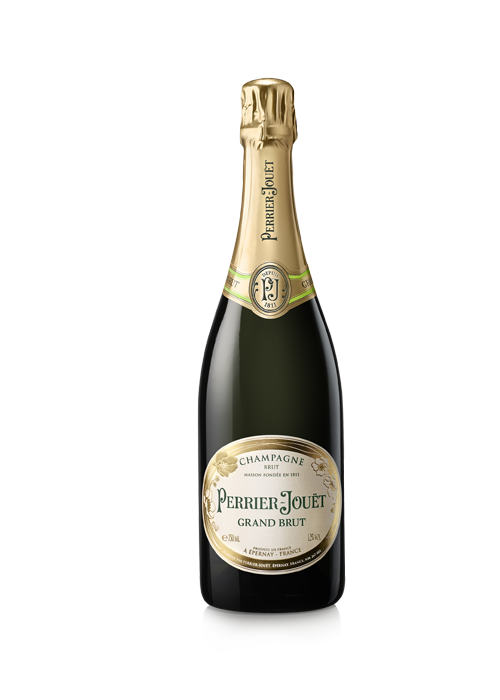 widely available Brut style wine has a suggested retail price of $22. Bits of citrus and white stone fruits fill the nose this wine. This entry level selection in the Mumm portfolio and it’s a classic Brut. The palate is dry and loaded with fruit and spice. Yeast and biscuit characteristics emerge on the finish which has nice length. While the friendly price makes it an obvious choice for holiday celebrations this wine will go very well with food whether it’s paired with a first course during dinner or alongside brunch, you’ll be pleased with the results.
widely available Brut style wine has a suggested retail price of $22. Bits of citrus and white stone fruits fill the nose this wine. This entry level selection in the Mumm portfolio and it’s a classic Brut. The palate is dry and loaded with fruit and spice. Yeast and biscuit characteristics emerge on the finish which has nice length. While the friendly price makes it an obvious choice for holiday celebrations this wine will go very well with food whether it’s paired with a first course during dinner or alongside brunch, you’ll be pleased with the results.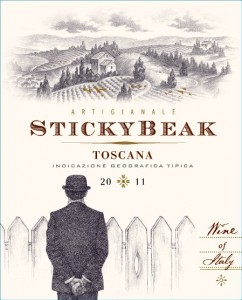 Stickybeak is a California based winery that sources grapes in a host of regions such as Napa, Sonoma and Monterey. They have now widened their reach by making a wine with fruit sourced in Italy. These particular grapes come from the 40 year old Cerreto Guidi vineyards located in Tuscany. Here’s a look at this Italian blend.
The Stickybeak 2011 Toscana was produced from a blend of Sangiovese (85%), Merlot (10%) and Syrah (5%). The Sangiovese and Merlot were both sourced in Tuscany with the Syrah coming from Maremma which is close by. Wild yeasts were used for fermentation which took place over roughly 15 days. Each varietal was aged separately over 18 months in entirely French oak. Blending occurred prior to bottling. This wine is finished in screw cap and has a suggested retail price of $20. Violet and red cherry aromas light up the nose of this Tuscan blend. Strawberry, cherry, spice, and vanilla bean are all in play throughout the palate which has nice depth. Leather, cherry, raspberry and black peppercorn flavors all show up in the finish which has above average length. This wine really shines when paired with food. Anything with red sauce on it will work well. I drank it with homemade pizza and it was memorable and delicious combo.
Stickybeak is a California based winery that sources grapes in a host of regions such as Napa, Sonoma and Monterey. They have now widened their reach by making a wine with fruit sourced in Italy. These particular grapes come from the 40 year old Cerreto Guidi vineyards located in Tuscany. Here’s a look at this Italian blend.
The Stickybeak 2011 Toscana was produced from a blend of Sangiovese (85%), Merlot (10%) and Syrah (5%). The Sangiovese and Merlot were both sourced in Tuscany with the Syrah coming from Maremma which is close by. Wild yeasts were used for fermentation which took place over roughly 15 days. Each varietal was aged separately over 18 months in entirely French oak. Blending occurred prior to bottling. This wine is finished in screw cap and has a suggested retail price of $20. Violet and red cherry aromas light up the nose of this Tuscan blend. Strawberry, cherry, spice, and vanilla bean are all in play throughout the palate which has nice depth. Leather, cherry, raspberry and black peppercorn flavors all show up in the finish which has above average length. This wine really shines when paired with food. Anything with red sauce on it will work well. I drank it with homemade pizza and it was memorable and delicious combo. In general people love Red Blends. Well when they’re tasty of course. There are all sorts of styles out there but the ones I’m specifically talking about today are the kind that are well priced, made for a wide audience and generally available. These have a found a big following with different kinds of wine lovers. To the novice Red wine drinker they can be easy to drink and appealing. To the seasoned wine drinker they offer something tasty and easy on the budget that will satisfy a lot of different taste buds. Murphy-Goode has a new blend called Homefront Red. For every bottle of this wine sold Murphy-Goode will doncate 50 cents to Operation Homefront, a national nonprofit that provides emergency and financial assiustance to the families of service members and wounded warriors. With that in mind here’s a look at the wine.
The Murphy-Goode 2011 Homefront Red was produced from fruit sourced throughout California. This offering blends together Syrah, Merlot, Petite Sirah and Zinfandel. This wine was aged in a combination of French and American oak. It was recently released and is available nationally. 50,000 Cases were produced and it has a suggested retail price of $15. Blackberry and raspberry aromas light up the nose of this wine along with a little hint of anise. The palate is loaded with berry fruit flavors such as black raspberry and spices galore. Red Cherry is present as well and leads to the finish which has wisps of sweet chocolate and black pepper. Homefront Red will pair well with a pretty wide array of foods. It will be particularly good with casual grilled foods.
In general people love Red Blends. Well when they’re tasty of course. There are all sorts of styles out there but the ones I’m specifically talking about today are the kind that are well priced, made for a wide audience and generally available. These have a found a big following with different kinds of wine lovers. To the novice Red wine drinker they can be easy to drink and appealing. To the seasoned wine drinker they offer something tasty and easy on the budget that will satisfy a lot of different taste buds. Murphy-Goode has a new blend called Homefront Red. For every bottle of this wine sold Murphy-Goode will doncate 50 cents to Operation Homefront, a national nonprofit that provides emergency and financial assiustance to the families of service members and wounded warriors. With that in mind here’s a look at the wine.
The Murphy-Goode 2011 Homefront Red was produced from fruit sourced throughout California. This offering blends together Syrah, Merlot, Petite Sirah and Zinfandel. This wine was aged in a combination of French and American oak. It was recently released and is available nationally. 50,000 Cases were produced and it has a suggested retail price of $15. Blackberry and raspberry aromas light up the nose of this wine along with a little hint of anise. The palate is loaded with berry fruit flavors such as black raspberry and spices galore. Red Cherry is present as well and leads to the finish which has wisps of sweet chocolate and black pepper. Homefront Red will pair well with a pretty wide array of foods. It will be particularly good with casual grilled foods. European wine can be intimidating to wine drinkers for a variety of reasons. Those with an interest in wine but who aren't total geeks about it don’t necessarily know the nuances of labeling and what might be in a particular bottle due to it generally listing region as opposed to varietal content. Stylistically many old world wines are often subtler than their new world counterparts and it can take time for palates to come around to the layered charms of those often elegant offerings. In contrast to all of that Domaines Paul Mas from the Languedoc region of France has some releases that are labeled in such a way that even the budding wine lover can easily discern contents. Additionally they are making wines that bridge the gap in style between the old and new worlds. Here’s a look at three of their current releases.
The Paul Mas 2011 Estate Pinot Noir is a single vineyard effort. All of the fruit for this wine came from their St. Hilaire Vineyard located in the Languedoc Region. This offering is 100% Pinot Noir. After maceration the fruit was fermented in a temperature controlled environment for approximately 9 days. Aging took place over 6 months in stainless steel, followed by 2 months in bottle prior to release. This wine has a suggested retail price of $14. Aromas of Strawberry and red cherry fill the nose of this Pinot Noir along with secondary characteristics such as mushroom. Those red fruit characteristics carry through the palate which is towards the more substantial side for Pinot Noir. Minerals, spice and earth are all in strong evidence on the finish which has good length. Medium tannins and zippy acidity lend to a nice backbone and structure here. This is a Pinot from the old world that shows off new world flavors while still being proportionate.
European wine can be intimidating to wine drinkers for a variety of reasons. Those with an interest in wine but who aren't total geeks about it don’t necessarily know the nuances of labeling and what might be in a particular bottle due to it generally listing region as opposed to varietal content. Stylistically many old world wines are often subtler than their new world counterparts and it can take time for palates to come around to the layered charms of those often elegant offerings. In contrast to all of that Domaines Paul Mas from the Languedoc region of France has some releases that are labeled in such a way that even the budding wine lover can easily discern contents. Additionally they are making wines that bridge the gap in style between the old and new worlds. Here’s a look at three of their current releases.
The Paul Mas 2011 Estate Pinot Noir is a single vineyard effort. All of the fruit for this wine came from their St. Hilaire Vineyard located in the Languedoc Region. This offering is 100% Pinot Noir. After maceration the fruit was fermented in a temperature controlled environment for approximately 9 days. Aging took place over 6 months in stainless steel, followed by 2 months in bottle prior to release. This wine has a suggested retail price of $14. Aromas of Strawberry and red cherry fill the nose of this Pinot Noir along with secondary characteristics such as mushroom. Those red fruit characteristics carry through the palate which is towards the more substantial side for Pinot Noir. Minerals, spice and earth are all in strong evidence on the finish which has good length. Medium tannins and zippy acidity lend to a nice backbone and structure here. This is a Pinot from the old world that shows off new world flavors while still being proportionate. Hecht & Bannier was founded in 2002 by Gregory Hecht and Francois Bannier. They set themselves up in the style of traditional French Negociants with a goal of creating reference point releases in each region they produce wines from. The latest additions to their portfolio are a couple of wines from Provence. Here’s a look at them.
The Hecht & Bannier Côtes de Provence 2012 Rosé was produced from a blend of Grenache (45%), Cinsault (40%) and Syrah (15%). The grapes utilized were sourced at a variety of vineyards, some in the foothills of Montagne Sainte-Victorie and others high altitude vineyards of Haute-Provence. The fruit was picked overnight during cooler hours to assure the preservation of freshness. This wine has a suggested retail price of $18. The light salmon hue of this offering is both beautiful and immediately striking. Engaging floral characteristics emerge from the nose. The palate is fruity, spice, dry, lithe and absolutely lovely. Cherry, strawberry, bits of orange zest and white pepper are all in play from the first sip through the above average finish. This wine goes down easily and it also has the depth and complexity to keep things interesting. It’s really a super appealing wine that you’re going to want to buy a few bottles of as they disappear quick once they’re open.
Hecht & Bannier was founded in 2002 by Gregory Hecht and Francois Bannier. They set themselves up in the style of traditional French Negociants with a goal of creating reference point releases in each region they produce wines from. The latest additions to their portfolio are a couple of wines from Provence. Here’s a look at them.
The Hecht & Bannier Côtes de Provence 2012 Rosé was produced from a blend of Grenache (45%), Cinsault (40%) and Syrah (15%). The grapes utilized were sourced at a variety of vineyards, some in the foothills of Montagne Sainte-Victorie and others high altitude vineyards of Haute-Provence. The fruit was picked overnight during cooler hours to assure the preservation of freshness. This wine has a suggested retail price of $18. The light salmon hue of this offering is both beautiful and immediately striking. Engaging floral characteristics emerge from the nose. The palate is fruity, spice, dry, lithe and absolutely lovely. Cherry, strawberry, bits of orange zest and white pepper are all in play from the first sip through the above average finish. This wine goes down easily and it also has the depth and complexity to keep things interesting. It’s really a super appealing wine that you’re going to want to buy a few bottles of as they disappear quick once they’re open. Chile is a country whose wines have been of interest to me for a long time. It’s an interest that has grown over time as the wines have increased in quality and diversity. Exciting things are happening in Chile and some of them are with long standing producers and others with newer ones.
Chile is a country whose wines have been of interest to me for a long time. It’s an interest that has grown over time as the wines have increased in quality and diversity. Exciting things are happening in Chile and some of them are with long standing producers and others with newer ones. 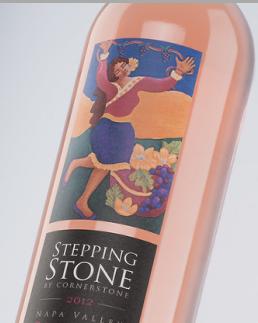 There are certain wines that hit my desk one vintage after another. It’s generally interesting and instructive to taste a new vintage of a wine to find out about if it’s as good, better or not as good as a previous example. We all have things we love a little more than most and for me excellent dry Rosé is near the top of my list. For several years now
There are certain wines that hit my desk one vintage after another. It’s generally interesting and instructive to taste a new vintage of a wine to find out about if it’s as good, better or not as good as a previous example. We all have things we love a little more than most and for me excellent dry Rosé is near the top of my list. For several years now  Common perception holds that Rosé’s don’t age well. Sometimes common beliefs are totally wrong and in other cases they become foregone conclusions for a good reason. In the case of Rosé’s longevity the truth is not 100% either of those things. Reality is that very few Rosés are built to age well. Some will hang around and be quite tasty for a couple of years but most go south after that. I’m the sort of person who is perfectly content drinking good, dry Rosé in the middle of winter, so I’m a fan. When the opportunity popped up to taste several vintages of Rosé from
Common perception holds that Rosé’s don’t age well. Sometimes common beliefs are totally wrong and in other cases they become foregone conclusions for a good reason. In the case of Rosé’s longevity the truth is not 100% either of those things. Reality is that very few Rosés are built to age well. Some will hang around and be quite tasty for a couple of years but most go south after that. I’m the sort of person who is perfectly content drinking good, dry Rosé in the middle of winter, so I’m a fan. When the opportunity popped up to taste several vintages of Rosé from 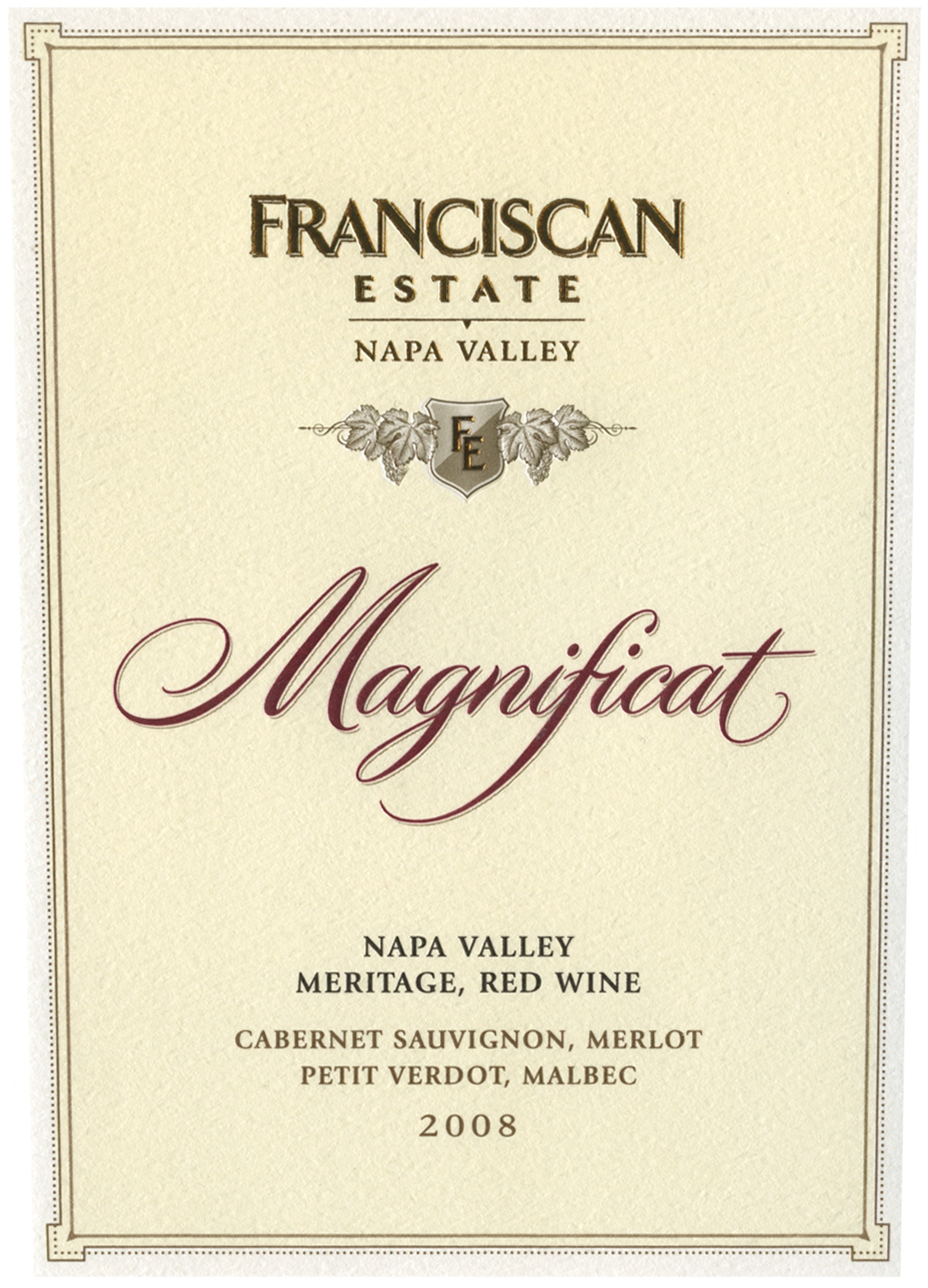 I’ve personally been drinking wines from Napa Valley’s
I’ve personally been drinking wines from Napa Valley’s 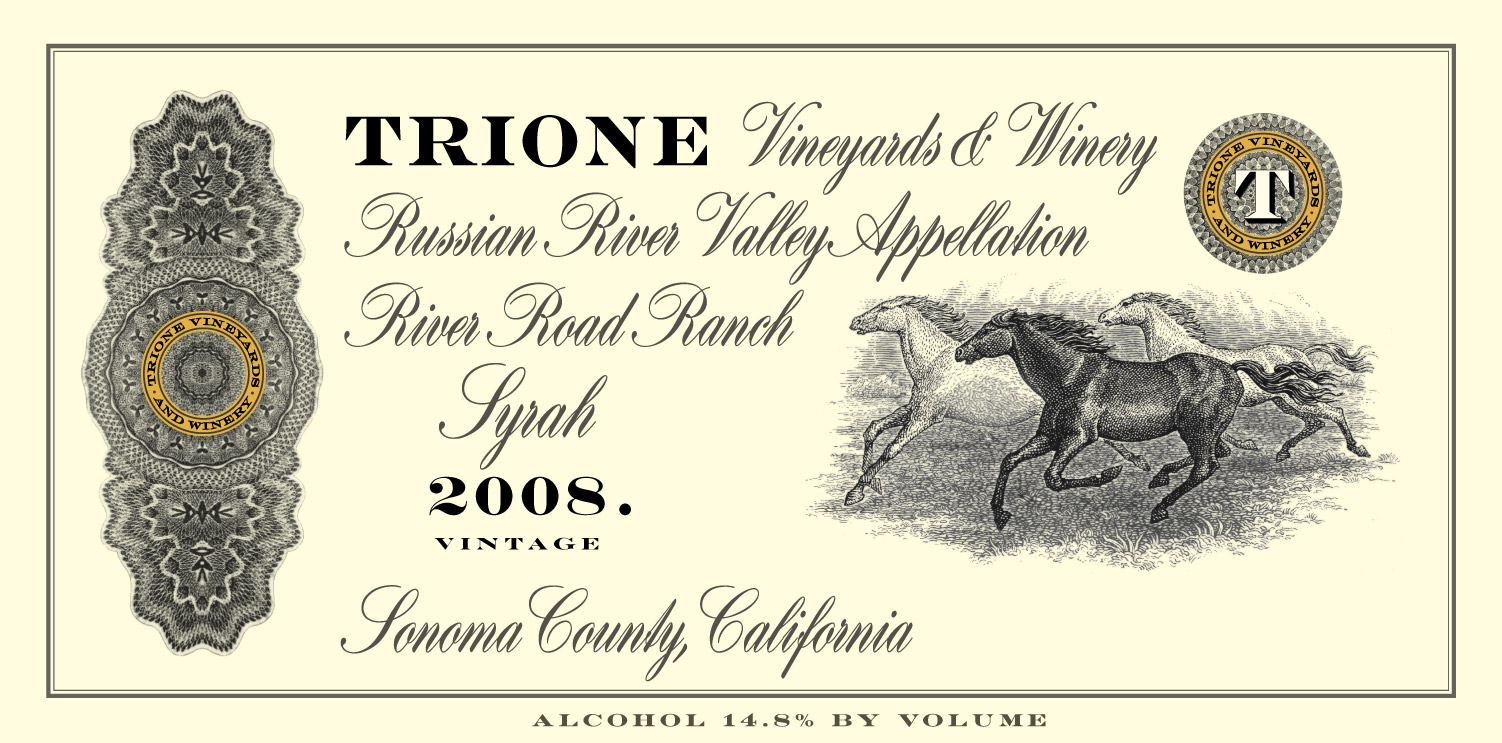 For more than 30 years the Trione Family has been growing and selling grapes in Sonoma County from their own property as well as vineyards they manage. In 2005 they launched
For more than 30 years the Trione Family has been growing and selling grapes in Sonoma County from their own property as well as vineyards they manage. In 2005 they launched  Terroir is one of those ideas that is thrown around a lot as a buzz word in the wine industry. Depending on who it is bringing it up there can be a bit of controversy surrounding it. And while it may seem a little out there to some folks to think that Cabernet Sauvignon for example planted in a specific spot can be imbued with very different characteristics than a Cabernet Sauvignon planted a few hundred feet away, the truth is in the bottle. All one really needs to better understand the concept of Terroir is a taste, once you’ve experienced it first hand it’s easier to believe. Of course it’s a sliding scale and not every wine or more specifically every place will impart that. Furthermore some wines are made in such a style that their Terroir ends up being masked. That’s a different part of the subject for another day. This is about wines that do show their sense of place. I attended Vinos De Terroir hosted by Wines of Chile. The concept was a focused look at 10 great examples of Terroir driven wines from Chile. The event took place at
Terroir is one of those ideas that is thrown around a lot as a buzz word in the wine industry. Depending on who it is bringing it up there can be a bit of controversy surrounding it. And while it may seem a little out there to some folks to think that Cabernet Sauvignon for example planted in a specific spot can be imbued with very different characteristics than a Cabernet Sauvignon planted a few hundred feet away, the truth is in the bottle. All one really needs to better understand the concept of Terroir is a taste, once you’ve experienced it first hand it’s easier to believe. Of course it’s a sliding scale and not every wine or more specifically every place will impart that. Furthermore some wines are made in such a style that their Terroir ends up being masked. That’s a different part of the subject for another day. This is about wines that do show their sense of place. I attended Vinos De Terroir hosted by Wines of Chile. The concept was a focused look at 10 great examples of Terroir driven wines from Chile. The event took place at 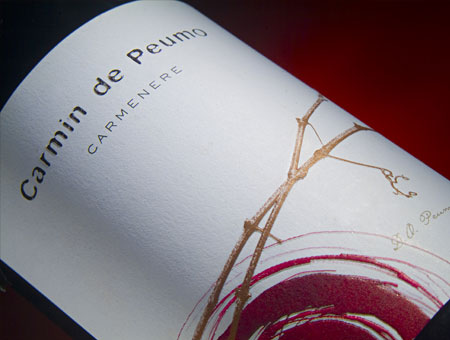

 We proceeded to walk a few blocks to
We proceeded to walk a few blocks to 
 Benessere Vineyards
Benessere Vineyards It’s a good thing I keep lists. In this case it’s a list of Wineries in Sonoma County I keep meaning to get to but haven’t yet. Thankfully I can now scratch
It’s a good thing I keep lists. In this case it’s a list of Wineries in Sonoma County I keep meaning to get to but haven’t yet. Thankfully I can now scratch 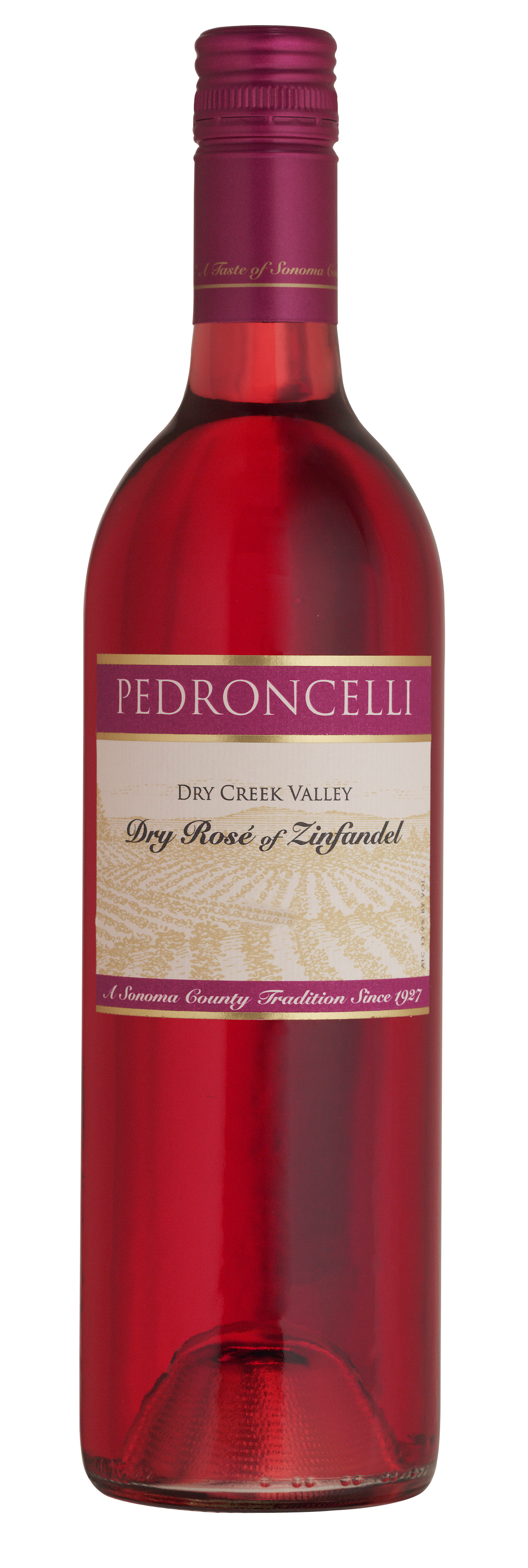 First up is the Pedroncelli 2011 Dry Rosé of Zinfandel. This Rosé is produced from fruit sourced in the winery’s home appellation of Dry Creek Valley. It’s a 100% varietal wine. Pedroncelli has been making Rosé since the 1950’s. Fermentation took place in temperature controlled stainless steel tanks. This wine saw no oak treatment. Just fewer than 1,000 cases were produced and it has a suggested retail price of $11. Aromas of strawberry and raspberry emerge from the welcoming nose of this Rosé. Cherry flavors dominate the palate along with hints of white pepper. Vanilla, and continuing juicy red fruit flavors continue on the crisp and refreshing finish. This a lovely dry Rosé of Zinfandel with some perceived sweetness from all the engaging fruit flavors. This is an excellent choice for a picnic.
First up is the Pedroncelli 2011 Dry Rosé of Zinfandel. This Rosé is produced from fruit sourced in the winery’s home appellation of Dry Creek Valley. It’s a 100% varietal wine. Pedroncelli has been making Rosé since the 1950’s. Fermentation took place in temperature controlled stainless steel tanks. This wine saw no oak treatment. Just fewer than 1,000 cases were produced and it has a suggested retail price of $11. Aromas of strawberry and raspberry emerge from the welcoming nose of this Rosé. Cherry flavors dominate the palate along with hints of white pepper. Vanilla, and continuing juicy red fruit flavors continue on the crisp and refreshing finish. This a lovely dry Rosé of Zinfandel with some perceived sweetness from all the engaging fruit flavors. This is an excellent choice for a picnic.